Come Together, Coven Me
 Or get MP3s. | Buy these at Amazon.com Click Images to Buy CDs |  Or get MP3s. |
Labels: affect, magic, magic setting, role-playing games, scale, social, spells, time

R.G. Male is a writer of horror, sci-fi, and miscellaneous dark fiction. See his chaos of thoughts on his craft, the industry, and his favourite hobby, pen and paper Role-Playing Games. Not to mention general train of thought.
 Or get MP3s. | Buy these at Amazon.com Click Images to Buy CDs |  Or get MP3s. |
Labels: affect, magic, magic setting, role-playing games, scale, social, spells, time
 Or get MP3s. | Buy these at Amazon.com Click Images to Buy CDs |  Or get MP3s. |
Labels: advancement, death, factors, magic, magic setting, role-playing games, rules, spells
 Or get MP3s. | Now at Amazon.COM NOT CA. Buy these at Amazon.com Click Images to Buy |  Or get MP3s. |
Labels: AD and D, fantasy setting, genre, magic setting, military, psychic setting, role-playing games, science fiction setting, setting
Most of the questions, suggestions, and considerations that were a part of devising the setting for a modern magical horror still apply in the horror fantasy setting. The fantasy setting conventions and norms provide extra help as well as disadvantages to crafting the horror of the setting. Even some magic that was discounted is back on the proverbial table. The disconnect that the fantasy genre has with the modern, rational world immediately opens up avenues of horror that would be unwieldy or impractical in the modern magical horror setting. That disconnect also negates the impact of breaking the rational, which is often a major factor in supernatural horrors. In its place is the horror of the inevitable, the persistent threat looming overhead, lurking in every corner.
 Or get MP3s. | Now at Amazon.COM NOT CA. Buy these at Amazon.com Click Images to Buy |  Or get MP3s. |
Labels: control, curses, fantasy, fantasy setting, horror, magic, magic setting, morals, zombies
Let’s continue with our specific spells of horror. The first comes from a self-proclaimed Demon Lord of Pestilence. The spell was always unleashed upon one victim who was initially unaware of the dark magic worked upon them. A lone nomad with no home or tribe was the first victim. The nomad travelled far and wide. All that came in contact with the nomad would fall to the pestilence laid upon him by the spell. Three days after contact, with no warning signs, the disease would strike. It was a deadly wasting. The virulent contagion spread via contact as well as contaminating the water. Animals were not immune to it either. Wherever the nomad went, even taking to a life of hermitage, he killed off all the local game, forcing him to move on and spread it even further.
 | Buy these at Amazon.ca Click Images to Buy | 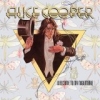 |
Labels: conjure, curses, horror, magic setting, murder, pestilence, spells, zombies
Let’s talk about some actual spells now. Rather than retread the usual ones how about something a little more original? First up, what villain hasn’t wanted to flay someone alive? It needs to be little more interesting though. Some ancient, angry, master of the arcane decided that it would be better instead to have a spell that caused his enemy’s skin to pull away from their muscles and stretch but not to tear open anywhere. The result was beyond painful and continuous. It led to a long agonising death due to internal bleeding. It had two added benefits dealing with the increased fear it caused. No ordinary man could achieve such a bizarre thing; it had to be the work of dark magic. It also looked really terrible, especially as the space between skin and flesh filled with blood.
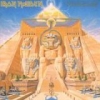 | Buy these at Amazon.ca Click Images to Buy | 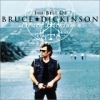 |
Labels: curses, evil, flaying, horror, magic setting, monsters, quile, revenge, spells, transformations
No matter what setting it happens in one of the most frightening things that can happen to a person is for them to be possessed. People innately need to feel in control, if of nothing more, than at least their own bodies and their actions. This is merely the first level of this insidious invasion. Invasion is actually the next level. Not only do the possessed have the vital loss of control, but also it is lost to something else, some invader--making it worse than mere mind control. At the next level there is a divergence that happens with two different kinds of torment possible. On the one hand the possessed person blacks out and does not know what happened when the invading force is in control. The other hand is that the possessed person helplessly watches everything that the invader is doing.
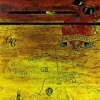 | Buy these at Amazon.ca Click Images to Buy | 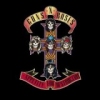 |
Labels: consequences, control, depraved, frightening, horror, indignity, magic setting, possession
In a magical horror setting the spell casters need to deal with the same sorts of logistical details in covering their tracks and maintaining a facade of a normal life, as do the empowered in a psychic horror setting. They share more of the strategic considerations beyond that though. In some cases, with the use of certain spells, they share the same abilities of control over others. The first case in point is controlling the minds of others. The magic user’s control over others comes in different forms with different levels of malleability. They can put people into trances where the individual stands or is recumbent and does nothing, not even think. They can make the individual do their bidding. This greater control involves anything from puppeting the person to possessing them.
 | Buy these at Amazon.ca Click Images to Buy | 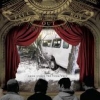 |
Labels: horror, hypnosis, magic setting, possession, psychic setting, scrying
There are many classic spells that can be cast when the setting is one of fantasy. In comparison, with a horror setting there is no basic set. Many of the fantasy spells need to be modified for a horror setting, if the specific spell even fits the mood and the grit of the setting. Some categorisations are needed first off. At the least, a good look at the purpose of the spell is needed, both from the view of the character using it, and from the greater view of the author, screenwriter, game designer, etc. The caster will want some spells that can be used in situations where it would be difficult or impossible to bring in equipment and gear to pull off the same feat. A spell caster might also want, and learn spells that are used to theatrical effect, which in turn can be used for intimidation.
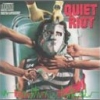 | Buy these at Amazon.ca Click Images to Buy |  |
Labels: categories, deniability, desctructive, horror, intimidation, magic setting, plausibility, theatrical
The presupposition has been put forward that in a horrific magical setting there will be a moderate to great discrepancy in the quantity of evil versus that of good. This is especially true as it pertains to non-human beings. What has not been discussed yet is a matter of balance in the quality of power between good and evil, and to a lesser degree human and non-human. In the psychic horror setting there was frequent discussion about the balance of power. The power between the two moral sides was equal for the most part--there were no non-humans, negating that issue. Balance was something considered at practically every stage due to the great flexibility of the powers. This begs the following question. Why is there no talk of balance in the magical horror setting?
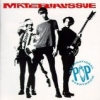 | Buy these at Amazon.ca Click Images to Buy |  |
Labels: balance, creatures, evil, good, higher powers, horror, magic setting, monster
The last section of the previous discussion about things from beyond presupposes that the morality of otherworldly creatures is evil. This is certainly advantageous to the creation of horror, but by no means is it a necessity. Inhuman beings can be starkly good or evil, or they can be more like humans and exist within the grey areas in between to the two. Likewise, horror also can have a distinct preponderance of evil in general. This goes beyond the usual narrative conflict of person versus person, or in many of these cases, person versus the supernatural. In the magical horror setting, more so than the psychic horror setting, the question of morality applies more directly to both the schools of magic as well as to the spells and rituals themselves.
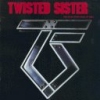 | Buy these at Amazon.ca Click Images to Buy | 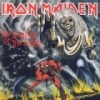 |
Labels: evil, good, horror, impart, influence, infuse, magic setting, sacrifice, schools of magic, supernatural, taint